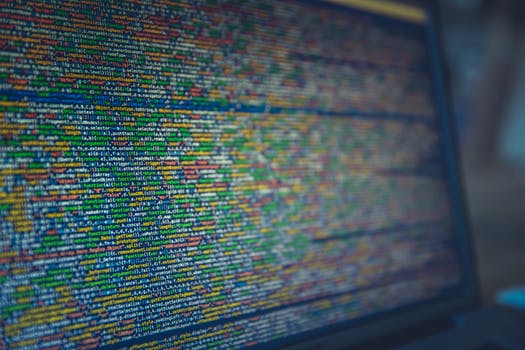TheDeveloperBlog.com
C-Sharp | Java | Python | Swift | GO | WPF | Ruby | Scala | F# | JavaScript | SQL | PHP | Angular | HTML
C++ algorithm remove_copy_if() function
C++ algorithm remove_copy_if() function with c++ tutorial for beginners and professionals with examples on adjacent_find(),any_of(), copy(), copy_if(), count(), count_if(), equal(), find(), find_end(), find_first_of(), find_if(), find_if_not(), for_each() etc.
C++ Algorithm remove_copy_if()C++ Algorithm remove_copy_if() function is used to copy all elements in the range [first, last) to the range beginning at result, except those elements for which pred returns true without disturbing the order of the remaining elements. This function cannot alter the size of the container.
Syntax
template <class InputIterator, class OutputIterator, class UnaryPredicate> OutputIterator remove_copy_if (InputIterator first, InputIterator last, OutputIterator result, UnaryPredicate pred); Parameter
first: A forward iterator pointing the position of the first element in the range from which elements are being removed. last: A forward iterator pointing the position one past the final element in the range from which elements are being removed. result: An output iterator pointing to the initial position of the range to which elements are being removed. pred: That must be satisfied is the value of an element is to be replaced. Return value
A forward iterator pointing the new end position (last) of the copied range, which includes all elements in [first, last) except those for which pred will return true. ComplexityComplexity is linear in the range [first, last): Applies pred to each element, and performs assignment operation for those which are not removed. Data racesThe object in the range [first, last) are accessed. The objects in the range between result and the returned value are changed. ExceptionsThis function throws an exception if any of pred, the element assignments or the operations on iterator throws an exception. Please note that invalid parameters cause an undefined behavior. Example 1Let's see the simple example to demonstrate the use of remove_copy_if():
#include <algorithm>
#include <iostream>
#include <vector>
#include <iterator>
using namespace std;
int main() {
vector<int> v = { 2,1,3,4,5,7,6,9,8};
remove_copy_if(v.begin(), v.end(),
ostream_iterator<int>(cout, ","),
[](int x) { return x%2 != 0; });
return 0;
}
Output: 2,4,6,8, Example 2Let's see another simple example:
#include <vector>
#include <algorithm>
#include <iostream>
using namespace std;
bool IsOdd(int i) {
return ((i % 2) != 0);
}
// Function to remove from v1 result vector is v2
void remove_copy_ifDemo(vector <int> &v1, vector<int> &v2)
{
remove_copy_if(v1.begin(), v1.end(), v2.begin(), IsOdd);
}
// Function to print content of vector
void print(vector<int>&v)
{
int len = v.size();
for (int i = 0; i < len; i++)
cout << v[i] << " ";
cout << endl;
}
int main()
{
// declare vector v1, v2
vector <int> v1, v2(10);
// push data in vector
for(int i = 10; i <= 20; i++)
v1.push_back(i);
cout << "elements of v1 before remove_copy: ";
print(v1);
remove_copy_ifDemo(v1,v2);
cout << "elements of v1 after remove_copy: ";
print(v1);
cout << "After removing Odd Numbers from v1"
" copy result in vector v2" <<endl;
print(v2);
return 0;
}
Output: elements of v1 before remove_copy: 10 11 12 13 14 15 16 17 18 19 20 elements of v1 after remove_copy: 10 11 12 13 14 15 16 17 18 19 20 After removing Odd Numbers from v1 copy result in vector v2 10 12 14 16 18 20 0 0 0 0 Example 3Let's see another simple example:
#include <iostream>
#include <vector>
#include <algorithm>
#include <functional>
using namespace std;
int main()
{
const int MAX_ELEMENTS = 8 ;
// Define a template class vector of integers
typedef vector<int > IntVector ;
//Define an iterator for template class vector of integer
typedef IntVector::iterator IntVectorIt ;
//vector containing numbers
IntVector Numbers(MAX_ELEMENTS), Result(MAX_ELEMENTS) ;
IntVectorIt start, end, it, last, resultIt ;
//Initialize vector Numbers
Numbers[0] = 10 ;
Numbers[1] = 20 ;
Numbers[2] = 10 ;
Numbers[3] = 15 ;
Numbers[4] = 12 ;
Numbers[5] = 25 ;
Numbers[6] = 30 ;
Numbers[7] = 10 ;
start = Numbers.begin() ; // location of first
// element of Numbers
end = Numbers.end() ; // one past the location
// last element of Numbers
resultIt = Result.begin() ; // location of first
// element of Result
// print content of Numbers
cout << "Numbers { " ;
for(it = start; it != end; it++)
cout << *it << " " ;
cout << " }\n" << endl ;
// copy all elements from Numbers to Result
// skipping any item that >= 25
last = remove_copy_if(start, end, resultIt,
bind2nd(greater_equal<int>(), 25)) ;
//print number of elements copied to Result
cout << "Total number of elements copied to Result = "
<< last - resultIt << endl ;
start = Result.begin() ; // location of first
// element of Result
end = Result.end() ; // one past the location
// last element of Result
// print content of Result
cout << "Result { " ;
for(it = start; it != end; it++)
cout << *it << " " ;
cout << " }\n" << endl ;
return 0;
}
Output: Numbers { 10 20 10 15 12 25 30 10 }
Total number of elements copied to Result = 6
Result { 10 20 10 15 12 10 0 0 }
Example 4Let's see another simple example:
#include <vector>
#include <algorithm>
#include <iostream>
using namespace std;
bool greathan(int value)
{ return value >7;}
int main(void)
{
// vector container
vector <int> vec1, vec2(14);
// vector iterator
vector <int>::iterator Iter1, Iter2, new_end;
int i, j;
// push data in range
for(i = 0; i <= 10; i++)
vec1.push_back(i);
for(j = 0; j <= 2; j++)
vec1.push_back(5);
// print the data
cout<<"The original vec1 vector data: ";
for(Iter1 = vec1.begin(); Iter1 != vec1.end(); Iter1++)
cout<<*Iter1<<" ";
cout<<endl;
// randomly shuffle the data
random_shuffle(vec1.begin(), vec1.end());
cout<<"\nThe original vec1 vector data randomly shuffled: ";
for(Iter1 = vec1.begin(); Iter1 != vec1.end(); Iter1++)
cout<<*Iter1<<" ";
cout<<endl;
// remove elements with a value greater than 7
new_end = remove_copy_if(vec1.begin(), vec1.end(), vec2.begin(), greathan);
cout<<"\nAfter the remove_copy_if() operation, the vec1 vector is left unchanged as: ";
for(Iter1 = vec1.begin(); Iter1 != vec1.end(); Iter1++)
cout<<*Iter1<<" ";
cout<<endl;
cout<<"\nvec2 vector is a copy of vec1 vector with values greater than 7 removed: ";
for(Iter2 = vec2.begin(); Iter2 != new_end; Iter2++)
cout<<*Iter2<<" ";
cout<<endl;
return 0;
}
Output: The original vec1 vector data: 0 1 2 3 4 5 6 7 8 9 10 5 5 5 The original vec1 vector data randomly shuffled: 4 10 5 5 0 5 5 1 6 9 3 7 8 2 After the remove_copy_if() operation, the vec1 vector is left unchanged as: 4 10 5 5 0 5 5 1 6 9 3 7 8 2 vec2 vector is a copy of vec1 vector with values greater than 7 removed: 4 5 5 0 5 5 1 6 3 7 2
Next TopicC++ Algorithm
|
Related Links:
- C++ set key_comp() Function
- C++ set value_comp() Function
- C++ set find() Function
- C++ set count() Function
- C++ set lower_bound() Function
- C++ set upper_bound() Function
- C++ set equal_range() Function
- C++ set get_allocator() Function
- C++ set operator==
- C++ set operator!=
- C++ algorithm iter_swap() function
- C++ multiset equal_range() function
- C++ Program to Convert Number in Character
- C++ Program to Print Alphabet Triangle
- C++ Vector back() function
- C++ Program to Print Number Triangle
- C++ algorithm search() function
- C++ Program to Generate Fibonacci Triangle
- Top 39 C++ Interview Questions (2021)
- C++ multiset lower_bound() function
- C++ multiset upper_bound() function
- C++ multiset get_allocator() function
- C++ multiset operator==
- C++ algorithm adjacent_find() function
- C++ algorithm any_of() function
- C++ multiset non member operator greater than=
- C++ multiset swap() function
- C++ multiset operator!=
- C++ algorithm copy() function
- C++ algorithm remove_if() function
- C++ algorithm reverse_copy() function
- C++ algorithm copy_if() function
- C++ Math llrint() Function
- C++ Math tgamma() Function
- C++ Math lgamma() Function
- C++ Math nearbyint() Function
- C++ Math remainder() Function
- C++ Math remquo() Function
- C++ Math fabs() Functions
- C++ Math abs() Functions
- C++ Math fma() Function
- C++ Math fpclassify() Function
- C++ Math isgreaterequal() Function
- C++ algorithm count() function
- C++ algorithm count_if() function
- C++ algorithm equal() function
- C++ algorithm find_if() function
- C++ algorithm all_of() function
- C++ algorithm copy_backward() function
- C++ algorithm copy_n() function
- C++ algorithm is_permutation() function
- C++ algorithm mismatch() function
- C++ algorithm none_of() function
- C++ algorithm swap() function
- C++ algorithm fill() function
- C++ algorithm replace_copy_if() function
- C++ algorithm replace_copy() function
- C++ algorithm replace_if() function
- C++ algorithm transform() function
- C++ algorithm fill_n() function
- C++ set crend() Function
- C++ set empty() Function
- C++ set size() Function
- C++ set max_size() Function
- C++ Output Iterator
- C++ Programs
- C++ algorithm move_backward() function
- C++ algorithm reverse() function
- C++ algorithm find_if_not() function
- C++ Math isfinite() Function
- C++ Math isinf() Function
- C++ multiset operator less than
- C++ multiset non member operator less than=
- C++ multiset non member operator greater than
- C++ Math isnan() Functions
- C++ Math isnormal() Function
- C++ Math signbit() Function
- C++ Math isgreater() Function
- C++ Math less() Function
- C++ Math isunordered() Function
- C++ Math erf() Function
- C++ Math erfc() Function
- C++ set cbegin() Function
- C++ set end() Function
- C++ String rbegin() function
- C++ algorithm random_shuffle() function
- C++ algorithm remove_copy_if() function
- C++ Vector front() function
- C++ set
- C++ Stack
- C++ Queue
- C++ Stack empty() Function
- C++ Stack pop() Function
- C++ Queue emplace() Function
- C++ Queue empty() Function
- C++ Queue front() Function
- C++ algorithm is_sorted_until() function
- C++ algorithm is_sorted() function
- C++ algorithm rotate_copy() function
- C++ algorithm rotate() function
- C++ Stack push() Function
- C++ Stack size() Function
- C++ set swap() Function
- C++ set clear() Function
- C++ set emplace() Function
- C++ set emplace_hint() Function
- C++ algorithm merge() function
- C++ algorithm set_union() function
- C++ Queue pop() Function
- C++ Math cos() Function
- C++ Queue push() Function
- C++ set insert() Function
- C++ set erase() Function
- C++ algorithm find() function
- C++ Math sin() Function
- C++ Queue size() Function
- C++ multiset
- C++ Math tan() Function
- C++ Math log10() Function
- C++ String compare() function
- C++ Math acos() Function
- C++ String length() function
- C++ Math asin() Function
- C++ String swap() function
- C++ multiset constructor
- C++ Math atan() Functions
- C++ String size() function
- C++ set operator less than
- C++ set operator less than=
- C++ set operator greater than
- C++ Math atan2() Function
- C++ String resize() function
- C++ String replace() function
- C++ multiset clear() function
- C++ multiset emplace() function
- C++ multiset erase() function
- C++ multiset destructor
- C++ multiset begin() function
- C++ multiset end() function
- C++ multiset operator= function
- C++ multiset rbegin() function
- C++ multiset crbegin() function
- C++ algorithm partial_sort() function
- C++ algorithm sort() function
- C++ multiset swap() function
- C++ multiset rend() function
- C++ multiset cbegin() function
- C++ multiset cend() function
- C++ multiset emplace_hint() function
- C++ multiset find() function
- C++ History
- C++ Features
- C++ set operator greater than=
- C++ set swap() Function (Non-member)
- C++ String max_size() function
- Turbo C++ - Download and Installation
- C++ Program
- C++ Basic Input Output (cin, cout, endl)
- C++ Variable
- C++ Object Class
- C++ Vector rbegin() function
- C++ Data types
- C++ Keywords
- C++ Vector clear() function
- C++ Vector max_size() function
- C++ Operators
- C++ if-else
- C++ switch
- C++ For Loop
- C++ While Loop
- C++ Math cosh() Function
- C++ Do-While Loop
- C++ Math sinh() Function
- C++ Break Statement
- C++ Math tanh() Function
- C++ Continue Statement
- C++ Math acosh() Function
- C++ Goto Statement
- C++ Math asinh() Function
- C++ Math atanh() Function
- C++ Comments
- C++ Math exp() Function
- C++ Math frexp() Function
- C++ Math log() Function
- C++ Functions
- C++ Math modf() Function
- C++ Recursion
- C++ Storage Classes
- C++ Forward Iterator
- C++ Input Iterator
- C++ Math exp2() Function
- C++ multiset key_comp() function
- C++ algorithm unique_copy() function
- C++ Math llround() Function
- C++ Arrays
- C++ Passing Array to Function
- C++ Multidimensional Arrays
- C++ Pointers
- C++ OOPs Concepts
- C++ Constructor
- C++ Copy Constructor
- C++ Destructor
- C++ algorithm upper_bound() function
- C++ this Pointer
- C++ static
- C++ Structs
- C++ Enumeration
- C++ friend function
- C++ Math Functions
- C++ Inheritance
- C++ Aggregation
- C++ Polymorphism
- C++ Overloading
- C++ algorithm lower_bound() function
- C++ Vector
- C++ Math expm1() Function
- C++ Math log1p() Function
- C++ Math log2() Function
- C++ String append() function
- C++ Tutorial | Learn C++ Programming
- C++ multiset crend() function
- C++ multiset empty() function
- C++ multiset insert() function
- C++ Math logb() Function
- C++ String at() function
- C++ Math scalbn() Function
- C++ String find() function
- C++ Math scalbln() Function
- C++ String find_first_of() function
- C++ algorithm replace() function
- C++ algorithm swap_ranges() function
- C++ Math ilogb() Function
- C++ String find_first_not_of() function
- C++ Math copysign() Function
- C++ String find_last_of() function
- C++ Math nextafter() Function
- C++ String find_last_not_of() function
- C++ Math nexttoward() Function
- C++ String insert() function
- C++ String push_back() function
- C++ String assign() function
- C++ algorithm search_n() function
- C++ algorithm generate_n() function
- C++ String copy() function
- C++ algorithm find_end() function
- C++ algorithm find_first_of() function
- C++ algorithm generate() function
- C++ algorithm remove() function
- C++ algorithm is_partitioned() function
- C++ String begin() function
- C++ String cbegin() function
- C++ String cend() function
- C++ String clear() function
- C++ String crbegin() function
- C++ Function Overriding
- C++ virtual function
- C++ vs C#
- C++ Convert int to string
- C++ Components of STL
- C++ String Data() function
- C++ String empty() function
- C++ Algorithm
- C++ Iterators
- C++ Bidirectional Iterator
- C++ Namespaces
- C++ Strings
- C++ String erase() function
- C++ Stack emplace() Function
- C++ Exception Handling
- C++ String front() function
- C++ vs Java
- C++ try-catch
- C++ String operator+=() function
- C++ multiset value_comp() function
- C++ multiset count() function
- C++ User-Defined Exceptions
- C++ Templates
- C++ Signal Handling
- C++ File and Stream
- C++ String operator=() function
- C++ String operator[]() function
- C++ String rfind() function
- C++ String end() function
- C++ String capacity() function
- C++ String shrink_to_fit() function
- C++ String crend() function
- C++ algorithm shuffle() function
- C++ algorithm stable_partition() function
- C++ String reserve() function
- C++ String pop_back() function
- C++ Vector at() function
- C++ String c_str() function
- C++ Vector swap() function
- C++ Vector push_back() function
- C++ Vector pop_back() function
- C++ Vector empty() function
- C++ set destructor
- C++ set operator=() Function
- C++ set begin() Function
- C++ Vector insert() function
- C++ Stack top() Function
- C++ Queue back() Function
- C++ Vector erase() function
- C++ String back() function
- C++ String rend() function
- C++ Vector resize() function
- C++ Vector size() function
- C++ Vector capacity() function
- C++ Math islessgreater() Function
- C++ Vector assign() function
- C++ Vector operator=() function
- C++ Vector operator[]() function
- C++ Vector end() function
- C++ Vector emplace() function
- C++ Vector emplace_back() function
- C++ Vector rend() function
- C++ Vector begin() function
- C++ Vector cend() function
- C++ Vector cbegin() function
- C++ Math fdim() Function
- C++ Vector crbegin() function
- C++ Math fmax() Function
- C++ Vector crend() function
- C++ Math fmin() Function
- C++ Vector data() function
- C++ Vector shrink_to_fit() function
- C++ Math pow() Function
- C++ algorithm unique() function
- C++ Math sqrt() Function
- C++ Math cbrt() Function
- C++ Math islessequal() Function
- C++ Math hypot() Function
- C++ Math ceil() Functions
- C++ algorithm for_each() function
- C++ multiset max_size() function
- C++ multiset size() function
- C++ Math floor() Function
- C++ set constructor
- C++ Math round() Function
- C++ algorithm equal_range() function
- C++ algorithm includes() function
- C++ algorithm inplace_merge() function
- C++ Math lround() Functions
- C++ algorithm partition_copy() function
- C++ algorithm partition_point() function
- C++ algorithm partition() function
- C++ Math fmod() Function
- C++ Program to Reverse Number
- C++ Math trunc() Function
- C++ Program to Swap Tow Number Without Third Variable
- C++ algorithm stable_sort() function
- C++ algorithm binary_search() function
- C++ Math rint() Function
- C++ Program to Convert Decimal to Binary
- C++ Math lrint() Function
- C++ algorithm nth_element() function
- C++ algorithm partial_sort_copy() function
- C++ set cend() Function
- C++ set rbegin() Function
- C++ set rend() Function
- C++ set crbegin() Function
- C++ algorithm move() function
- C++ algorithm remove_copy() function


